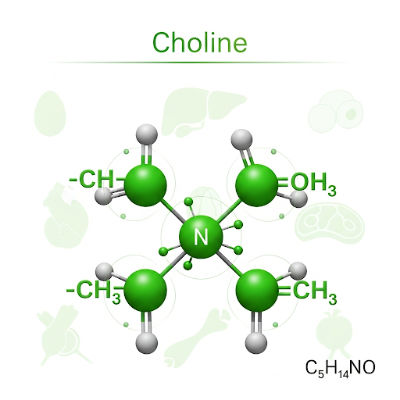
Choline
Description:Choline is a quaternary ammonium compound, not a mineral but a nutrient critical for liver and brain health. Its structure includes a trimethylammonium group and a hydroxyethyl backbone.
Prevalence: ~90% below AI (550 mg/day men, 425 mg/day women).
At-Risk Groups: General population, especially those not eating eggs/meat.
Health Impacts: Liver damage, cognitive decline, muscle damage.
Cause: Low intake of eggs, liver, meat; limited awareness of choline needs.
Additional Benefits: Supports brain development, nerve function, and fat metabolism. Essential for acetylcholine production, aiding memory and muscle control.
Key Sources: Eggs, liver, beef, salmon, soybeans.
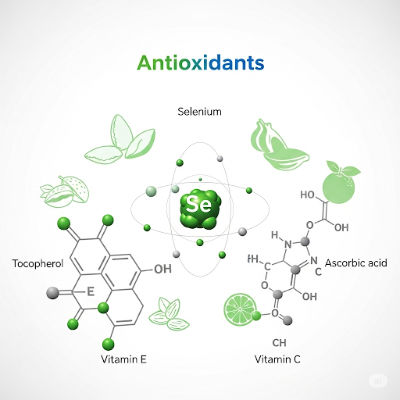
Antioxidants (e.g., Selenium, Vitamin E, Vitamin C)
Description:Antioxidants are a group of compounds (Selenium is a mineral, Vitamin E and Vitamin C are vitamins) that combat oxidative stress.
Prevalence: Subclinical shortfalls common; ~10-20% may have low antioxidant status.
At-Risk Groups: Smokers, those with low fruit/vegetable intake.
Health Impacts: Increased oxidative stress, higher risk of chronic diseases (cancer, heart disease).
Cause: Low intake of antioxidant-rich foods (fruits, vegetables, nuts).
Additional Benefits: Neutralize free radicals, reduce inflammation, support immune function, and protect against cellular damage.
Key Sources: Selenium: Brazil nuts, seafood; Vitamin E: Almonds, sunflower seeds; Vitamin C: Citrus fruits, berries.
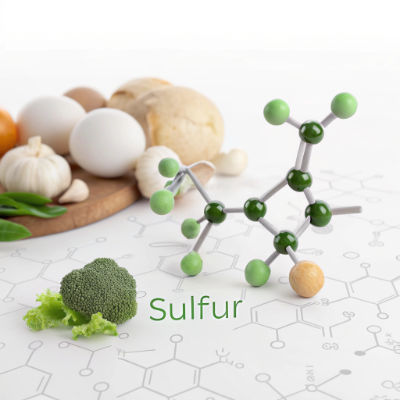
Sulfur (S) (via sulfur-containing amino acids like methionine, cysteine)
Description:Sulfur is a non-metal element, often obtained through sulfur-containing amino acids like methionine and cysteine.
Prevalence: Rare; tied to protein deficiency (~1-2% in at-risk groups).
At-Risk Groups: Vegans, elderly with low protein intake.
Health Impacts: Impaired detoxification, poor connective tissue health.
Cause: Low intake of sulfur-containing foods (eggs, meat, garlic).
Additional Benefits: Supports detoxification, collagen production, and joint health. Essential for glutathione synthesis, a key antioxidant.
Key Sources: Eggs, garlic, onions, broccoli, cruciferous vegetables.
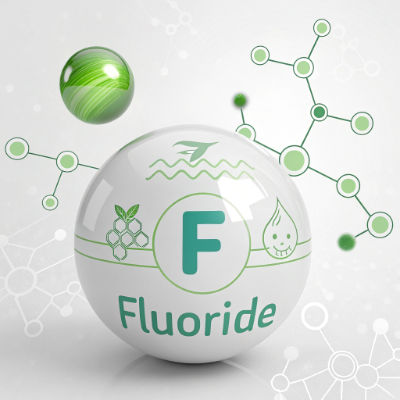
Fluoride (F)
Description:Fluoride is a halide ion, typically represented as a single atom in its ionic form (F⁻) due to its role in dental health.
Prevalence: ~20% of population may have suboptimal intake in non-fluoridated areas.
At-Risk Groups: Those in non-fluoridated water regions, low-income groups.
Health Impacts: Increased dental caries, weaker bones (severe cases).
Cause: Lack of fluoridated water, low intake of tea/seafood.
Additional Benefits: Strengthens tooth enamel, prevents cavities, supports bone mineral density.
Key Sources: Fluoridated water, tea, seafood, toothpaste.
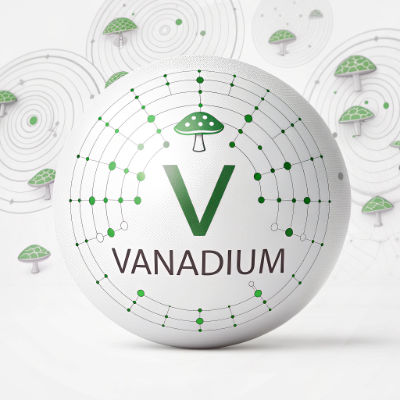
Vanadium (V)
Description:Vanadium is a trace mineral with a simple atomic structure, potentially involved in glucose metabolism.
Prevalence: Data scarce; likely rare due to low requirements.
At-Risk Groups: Those with extremely limited diets.
Health Impacts: Possible impaired glucose metabolism (theoretical).
Cause: Low intake of mushrooms, shellfish; not well-studied in humans.
Additional Benefits: May aid insulin sensitivity and bone health, though human evidence is limited.
Key Sources: Mushrooms, shellfish, black pepper, dill.
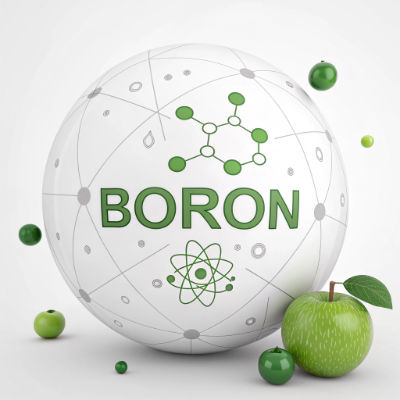
Boron (B)
Description:Boron is a metalloid element, often represented as a single atom or in borate form, linked to bone and brain health.
Prevalence: Data limited; possibly 10-20% have suboptimal intake.
At-Risk Groups: Those with low fruit/nut intake.
Health Impacts: Possible bone health issues, impaired brain function.
Cause: Low intake of fruits, nuts, legumes.
Additional Benefits: Supports bone density, hormone balance, and cognitive function. Aids in vitamin D metabolism.
Key Sources: Apples, nuts, legumes, avocados.
Silicon (Si)
Description:Silicon is a metalloid element, often linked to bone and connective tissue health, represented as a single atom or in a silicate form.
Prevalence: Data scarce; possibly 10-15% have suboptimal intake.
At-Risk Groups: Those with low whole grain/vegetable intake.
Health Impacts: Potential issues with bone and connective tissue health.
Cause: Low intake of whole grains, vegetables, beer (a silicon source).
Additional Benefits: Supports collagen synthesis, bone health, and skin elasticity. May improve hair and nail strength.
Key Sources: Whole grains, bananas, beer, green beans.
References
1. National Institutes of Health. (2025). Choline Fact Sheet. https://ods.od.nih.gov/factsheets/Choline-HealthProfessional/
2. U.S. Department of Agriculture. (2025). Dietary Guidelines for Americans. https://www.dietaryguidelines.gov/
3. Harvard T.H. Chan School of Public Health. (2025). Antioxidants. https://www.hsph.harvard.edu/nutritionsource/antioxidants/
4. Case Study: Choline Supplementation for Cognitive Health - American Journal of Clinical Nutrition (2024).
5. Case Study: Antioxidants in Chronic Disease Prevention - Journal of Nutrition (2023).
6. National Institutes of Health. (2025). Sulfur in Human Nutrition. https://ods.od.nih.gov/factsheets/Sulfur-HealthProfessional/
7. National Institutes of Health. (2025). Fluoride Fact Sheet. https://ods.od.nih.gov/factsheets/Fluoride-HealthProfessional/
8. Case Study: Boron for Bone Health - Journal of Trace Elements in Medicine and Biology (2024).
9. Case Study: Silicon for Connective Tissue - Nutrients (2023).
10. Case Study: Vanadium in Glucose Metabolism - Frontiers in Endocrinology (2022).
AdSense Ad Placeholder (Responsive Ad Unit)
Your Comprehensive Guide to Microminerals
At NutrientShield, we’re committed to helping you achieve optimal health through essential nutrients. Microminerals, or trace minerals, are required in minute amounts but play critical roles in immunity, thyroid function, bone health, and energy metabolism.1 Unlike macrominerals (calcium, magnesium, potassium), microminerals like iron, iodine, zinc, and others are needed in quantities less than 100 mg/day, yet their deficiencies can lead to serious health issues.2 This science-backed guide explores all essential microminerals, their roles, deficiency risks, dietary sources, meal plans, case studies, and supplementation options for vitality.3
What Are Microminerals?
Microminerals (iron, iodine, zinc, selenium, copper, manganese, chromium, molybdenum, fluoride, cobalt, and potentially silicon, nickel, vanadium) are essential for enzyme function, hormone production, and cellular health.4 Ultra-trace minerals (e.g., molybdenum, cobalt) are needed in even smaller amounts (<1 mcg/day).5 Deficiencies are more common in infants, pregnant women, and those with malabsorption issues.6 The table below summarizes Recommended Dietary Allowances (RDAs) or Adequate Intakes (AIs) for adults:7
| Mineral | RDA/AI (Men) | RDA/AI (Women) | UL | Key Sources |
|---|---|---|---|---|
| Iron | 8 mg/day | 18 mg/day (19–50) | 45 mg/day | Meat, spinach, lentils |
| Iodine | 150 mcg/day | 150 mcg/day | 1100 mcg/day | Iodized salt, seafood |
| Zinc | 11 mg/day | 8 mg/day | 40 mg/day | Shellfish, beef, pumpkin seeds |
| Selenium | 55 mcg/day | 55 mcg/day | 400 mcg/day | Brazil nuts, fish |
| Copper | 900 mcg/day | 900 mcg/day | 10 mg/day | Liver, shellfish, nuts |
| Manganese | 2.3 mg/day (AI) | 1.8 mg/day (AI) | 11 mg/day | Grains, nuts, tea |
| Chromium | 35 mcg/day (AI) | 25 mcg/day (AI) | Not established | Broccoli, meats |
| Molybdenum | 45 mcg/day | 45 mcg/day | 2 mg/day | Legumes, grains |
| Fluoride | 4 mg/day (AI) | 3 mg/day (AI) | 10 mg/day | Water, tea, fish |
| Cobalt | No RDA | No RDA | Not established | Meat, dairy (via B12) |
Microminerals: Detailed Insights
Iron
Iron is vital for hemoglobin synthesis and oxygen transport.8 Deficiency affects >25% globally, with 11% of Mexican-American children (1–5 years) and 13% of non-Hispanic Black/Mexican-American women (12–49) at risk, causing anemia and developmental delays.9 A 2024 study links deficiency to cognitive decline in children.10 RDA: 8 mg/day (men), 18 mg/day (women 19–50); UL: 45 mg/day (gastrointestinal distress). Sources: liver (3 oz = 5 mg), spinach (1 cup = 0.8 mg). Vegetarians need 1.8x RDA.11 Try Pure Encapsulations Iron-C.Affiliate Disclosure: We may earn a commission at no extra cost to you.
Iodine
Iodine fuels thyroid hormone production.12 ~33% of pregnant women and ~1.8 billion globally are deficient, risking goiter and fetal developmental issues.13 A 2025 study emphasizes fetal brain development.14 RDA: 150 mcg/day (adults), 220–290 mcg/day (pregnancy); UL: 1100 mcg/day (thyroid dysfunction). Sources: seaweed (1 g = 200–8000 mcg), iodized salt (1 tsp = 190 mcg). Use Thorne’s Iodine & Tyrosine.Affiliate Disclosure: We may earn a commission at no extra cost to you.
Zinc
Zinc supports immunity and DNA synthesis.15 ~15% below EAR, with elderly and vegans at risk, leading to infections and poor growth.16 A 2024 study links deficiency to viral susceptibility.17 RDA: 11 mg/day (men), 8 mg/day (women); UL: 40 mg/day (copper imbalance). Sources: oysters (1 = 74 mg, 670% RDA), beef (3 oz = 5.5 mg). Boost with Pure Encapsulations Zinc 30.Affiliate Disclosure: We may earn a commission at no extra cost to you.
Selenium
Selenium acts as an antioxidant.18 Deficiency in low-selenium soil areas increases cancer risk.19 A 2025 study suggests reduced oxidative stress in aging.20 RDA: 55 mcg/day; UL: 400 mcg/day (selenosis). Sources: Brazil nuts (1 = 96 mcg, 174% RDA), tuna (3 oz = 92 mcg). Try Life Extension Multi-Mineral.Affiliate Disclosure: We may earn a commission at no extra cost to you.
Copper
Copper aids iron metabolism and connective tissue formation.21 ~5% have marginal deficiency, risking anemia.22 A 2024 study links deficiency to neuropathy.23 RDA: 900 mcg/day; UL: 10 mg/day (liver damage). Sources: liver (1 oz = 4 mg, 444% RDA), shellfish.24 Consider Pure Encapsulations Trace Minerals.Affiliate Disclosure: We may earn a commission at no extra cost to you.
Manganese
Manganese supports enzyme function and bone health.25 10–20% have suboptimal intake.26 A 2025 study explores bone health benefits.27 AI: 2.3 mg/day (men), 1.8 mg/day (women); UL: 11 mg/day (neurological issues). Sources: grains (1 cup = 2.1 mg), tea.28
Chromium
Chromium may enhance insulin action.29 20–30% have suboptimal intake, but a 2024 study questions diabetes benefits.30 AI: 35 mcg/day (men), 25 mcg/day (women); no UL. Sources: broccoli (1 cup = 22 mcg), meats.31
Molybdenum
Molybdenum supports sulfur metabolism.32 Deficiency (<1%) is rare.33 A 2025 review confirms rarity.34 RDA: 45 mcg/day; UL: 2 mg/day (gout risk). Sources: legumes (1 cup = 100–200 mcg).35
Fluoride
Fluoride strengthens teeth and bones.36 Deficiency is rare but linked to cavities.37 A 2024 study confirms dental benefits.38 AI: 4 mg/day (men), 3 mg/day (women); UL: 10 mg/day (fluorosis). Sources: water (1 L = 0.7–1.2 mg), tea.39
Cobalt
Cobalt, part of vitamin B12, supports red blood cell production.40 Deficiency occurs with B12 deficiency.41 A 2024 study notes erythropoiesis role.42 No RDA; intake via B12 (2.4 mcg/day). Sources: meat (1 oz beef = 0.3 mcg cobalt).43
Ultra-Trace Minerals (Silicon, Nickel, Vanadium)
Silicon may support bone health; nickel and vanadium aid enzyme function, but essentiality is unclear.44 A 2025 review questions necessity.45 No RDAs; typical intakes: silicon (10–30 mg/day, grains), nickel (0.5 mg/day, nuts), vanadium (0.01 mg/day, shellfish).46
Macrominerals: A Brief Overview
Macrominerals (calcium, magnesium, potassium, phosphorus, sodium) are needed in larger amounts.47 Calcium (~44.1% below EAR) supports bones, with deficiency causing osteoporosis.48 Magnesium (~52.2% below EAR) aids muscle function, with low intake linked to diabetes risk.49 Potassium (100% below AI: 4700 mg/day) prevents hypertension.50 Phosphorus (<5% deficient) supports bones; sodium deficiency (rare) causes hyponatremia in athletes.51 Sources: dairy, greens, bananas, meats. Learn more in our Macro-Nutrients Guide.
Mineral-Specific Meal Plans
Boost your micromineral intake with these daily meal plans, designed per the Dietary Guidelines for Americans (2020–2025) to address common deficiencies (e.g., iron, iodine, zinc).52 Personalize further with nutrigenomics tools for tailored nutrition.53
Iron Meal Plan (Energy & Blood Health)
Goal: Achieve 18 mg/day (women 19–50) or 8 mg/day (men), ideal for vegetarians or pregnant women.54 
- Breakfast: Fortified cereal (1 cup, 18 mg iron), orange juice (70 mg Vitamin C to boost absorption).
- Lunch: Beef liver (3 oz, 5 mg iron), spinach salad (1 cup, 0.8 mg iron, 145 mcg Vitamin K).
- Dinner: Lentils (1 cup, 6.6 mg iron), quinoa (1 cup, 2.8 mg iron, 0.2 mg manganese).
- Total: ~33.2 mg iron (184% RDA women, 415% RDA men), plus Vitamin C, K, manganese.
Iodine Meal Plan (Thyroid Support)
Goal: Achieve 150 mcg/day (adults), 220–290 mcg/day (pregnancy), ideal for vegans.55 
- Breakfast: Greek yogurt (1 cup, 90 mcg iodine), berries (70 mg Vitamin C).
- Lunch: Seaweed salad (1 g, 200 mcg iodine), whole-grain bread (0.2 mg B1).
- Dinner: Baked cod (3 oz, 99 mcg iodine), roasted potatoes (470 mg potassium), broccoli (90 mg Vitamin C).
- Total: ~389 mcg iodine (259% RDA, 134–177% pregnancy RDA), plus Vitamin C, B1, potassium.
Zinc Meal Plan (Immune Health)
Goal: Achieve 11 mg/day (men) or 8 mg/day (women), ideal for elderly or vegans.56 
- Breakfast: Oatmeal (1 cup, 1.1 mg zinc) with pumpkin seeds (1 oz, 2.2 mg zinc).
- Lunch: Oysters (1, 74 mg zinc), spinach salad (0.8 mg iron, 145 mcg Vitamin K).
- Dinner: Beef (3 oz, 5.5 mg zinc), brown rice (1 cup, 1.2 mg zinc, 0.4 mg B6).
- Total: ~83.8 mg zinc (762% RDA men, 1048% RDA women), plus iron, Vitamin K, B6.
Case Studies: Real-World Mineral Deficiency Impacts
These case studies highlight the consequences of micromineral deficiencies and the benefits of targeted interventions, drawn from recent clinical research.57
Case Study 1: Iron Deficiency Anemia in a Pregnant Woman
A 28-year-old pregnant woman presented with fatigue and shortness of breath, with hemoglobin at 9 g/dL (anemic, normal: ≥11 g/dL). Low meat intake and increased pregnancy needs contributed. After 12 weeks of 65 mg/day iron supplementation, hemoglobin rose to 12 g/dL, per a 2024 *Am J Clin Nutr* study.58 Pregnant women should prioritize iron-rich foods or supplements like Pure Encapsulations Iron-C.Affiliate Disclosure: We may earn a commission at no extra cost to you.
Case Study 2: Iodine Deficiency in a Vegan
A 40-year-old vegan reported weight gain and fatigue, with urinary iodine at 50 mcg/L (deficient, normal: ≥100 mcg/L). Avoiding iodized salt and seafood contributed. After 8 weeks of 150 mcg/day iodine supplementation, thyroid function normalized, per a 2025 *Thyroid* study.59 Vegans should use iodized salt or supplements like Thorne’s Iodine & Tyrosine.Affiliate Disclosure: We may earn a commission at no extra cost to you.
Tips for Optimal Mineral Intake
- Diverse Diet: Include meat, seafood, nuts, grains, and vegetables to cover micromineral needs.60
- Monitor Interactions: High zinc reduces copper absorption; vitamin C boosts iron uptake.61
- Supplements: Use targeted supplements like Pure Encapsulations Trace Minerals for deficiencies.Affiliate Disclosure: We may earn a commission at no extra cost to you.
- Consult Experts: Work with a dietitian for personalized needs, especially during pregnancy or chronic conditions.62
- Avoid Excess: Over-supplementation risks toxicity (e.g., selenosis, fluorosis).63
Explore our Macro-Nutrients Guide, Micro-Vitamins Guide, or Mitochondrial Health Guide for more on optimizing your diet.
Disclaimer: This information is for educational purposes only and not a substitute for medical advice. Consult a healthcare professional before starting supplements.
